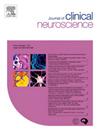立体定向放射手术治疗大脑膜瘤的疗效和安全性:一项全面的系统回顾和荟萃分析
IF 1.8
4区 医学
Q3 CLINICAL NEUROLOGY
引用次数: 0
摘要
背景:颅内大脑膜瘤(LIMs)的治疗具有挑战性。由于与切除相关的显著发病率,立体定向放射手术(SRS)越来越多地用于LIMs。本系统综述和荟萃分析评估了SRS在LIMs中的作用。方法于2025年3月21日进行文献检索。纳入了对体积大于8cm3或最大直径超过2.5 cm的lim患者进行前期或辅助SRS后疗效评估的研究。结果纳入7项研究,共纳入793例患者。平均肿瘤体积14.1 ~ 37.3 cm3。荟萃分析显示合并局部控制率为91% (95% CI: 86% - 94%)。此外,分析显示5年无进展生存率(PFS)为92% (95% CI: 86% - 96%), 10年PFS为81% (95% CI: 76% - 84%)。总生存率为88% (95% CI: 77% - 96%), 5年生存率为94% (95% CI: 89% - 97%), 10年生存率为88% (95% CI: 58% - 100%)。此外,荟萃分析显示,合并不良辐射效应(ARE)和srs后的切除率分别为19% (95% CI: 7% - 36%)和3% (95% CI: 0% -8%)。少分割SRS (99% [95% CI: 91% - 100%])的合并OS率明显高于容量分期SRS (82% [95% CI: 69% - 92%])和单次SRS (85% [95% CI: 48% - 100%]) (P = 0.01)。结论:前期或辅助SRS与有希望的放射学和临床结果以及可控的放射相关并发症有关。需要进一步的研究来比较前期SRS和辅助SRS,并评估单期、低分割和容量分期SRS在lim患者中的相对疗效和安全性。本文章由计算机程序翻译,如有差异,请以英文原文为准。
Efficacy and safety of stereotactic radiosurgery for large meningiomas: A comprehensive systematic review and meta-analysis
Background
Managing large intracranial meningiomas (LIMs) is challenging. Because of the significant morbidity associated with resection, stereotactic radiosurgery (SRS) has increasingly been employed for LIMs. This systematic review and meta-analysis assessed the role of SRS in LIMs.
Methods
On March 21, 2025, we performed a literature search. Studies evaluating outcomes after upfront or adjuvant SRS in patients with LIMs, with volumes larger than 8 cm3 or a maximum diameter exceeding 2.5 cm, were included.
Results
Eleven studies involving 793 patients were included. The mean tumor volume ranged from 14.1 to 37.3 cm3. The meta-analysis revealed a pooled local control (LC) rate of 91 % (95 % CI: 86 %–94 %). Additionally, the analysis demonstrated a pooled 5-year progression-free survival (PFS) rate of 92 % (95 % CI: 86 %–96 %) and a 10-year PFS rate of 81 % (95 % CI: 76 %–84 %). It exhibited a pooled overall survival (OS) rate of 88 % (95 % CI: 77 %–96 %), a 5-year OS rate of 94 % (95 % CI: 89 %–97 %), and a 10-year OS rate of 88 % (95 % CI: 58 %–100 %). Moreover, the meta-analysis revealed a pooled adverse radiation effect (ARE) and post-SRS resection rates of 19 % (95 % CI: 7 %–36 %) and 3 % (95 % CI: 0 %–8%), respectively. Hypofractionated SRS (99 % [95 % CI: 91 %–100 %]) was associated with a significantly higher pooled OS rate than volume-staged SRS (82 % [95 % CI: 69 %–92 %]) and single session SRS (85 % [95 % CI: 48 %–100 %]) (P = 0.01).
Conclusion
Upfront or adjuvant SRS is linked to promising radiological and clinical outcomes with manageable radiation-related complications. Further research is needed to compare upfront versus adjuvant SRS and evaluate the relative efficacy and safety of single-session, hypofractionated, and volume-staged SRS in individuals with LIMs.
求助全文
通过发布文献求助,成功后即可免费获取论文全文。
去求助
来源期刊

Journal of Clinical Neuroscience
医学-临床神经学
CiteScore
4.50
自引率
0.00%
发文量
402
审稿时长
40 days
期刊介绍:
This International journal, Journal of Clinical Neuroscience, publishes articles on clinical neurosurgery and neurology and the related neurosciences such as neuro-pathology, neuro-radiology, neuro-ophthalmology and neuro-physiology.
The journal has a broad International perspective, and emphasises the advances occurring in Asia, the Pacific Rim region, Europe and North America. The Journal acts as a focus for publication of major clinical and laboratory research, as well as publishing solicited manuscripts on specific subjects from experts, case reports and other information of interest to clinicians working in the clinical neurosciences.
 求助内容:
求助内容: 应助结果提醒方式:
应助结果提醒方式:


